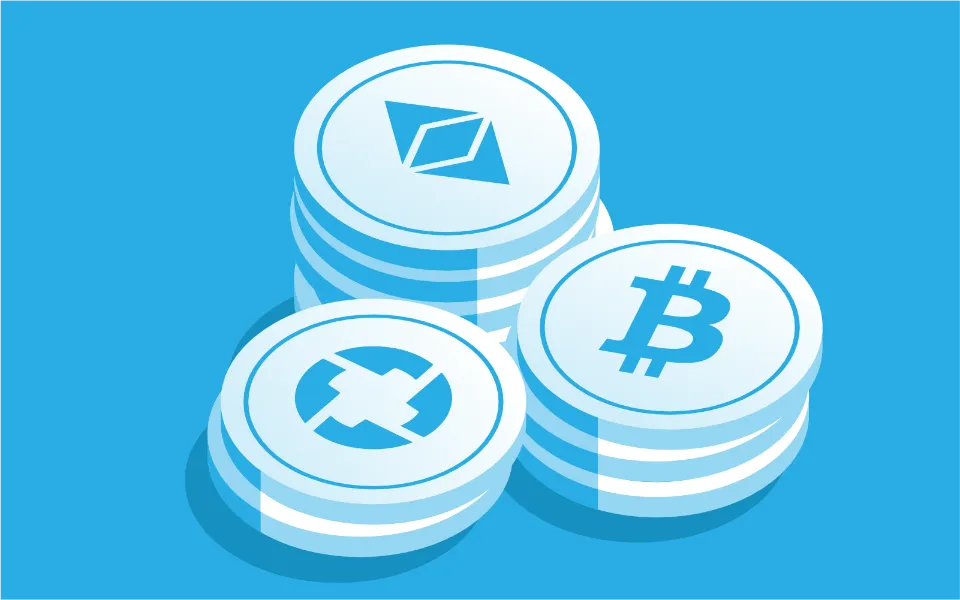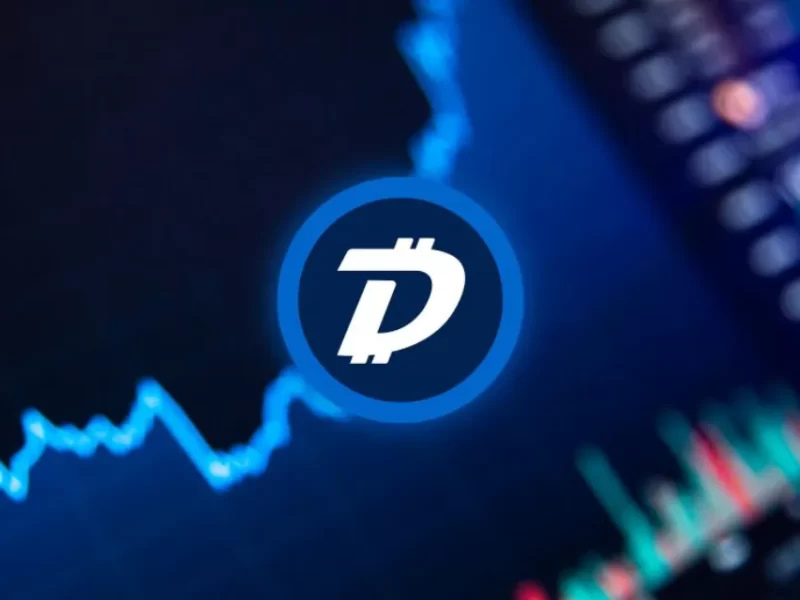Earning interest or dividends while holding onto your underlying assets is the equivalent of crypto staking in the world of passive income.
Cryptocurrency stakes do not come without risk. You’ll receive compensation in cryptocurrency, a risky investment whose value may drop. Staking crypto itself continues to be a comparatively secure and productive way to generate passive income.
How Does Staking Crypto Work?
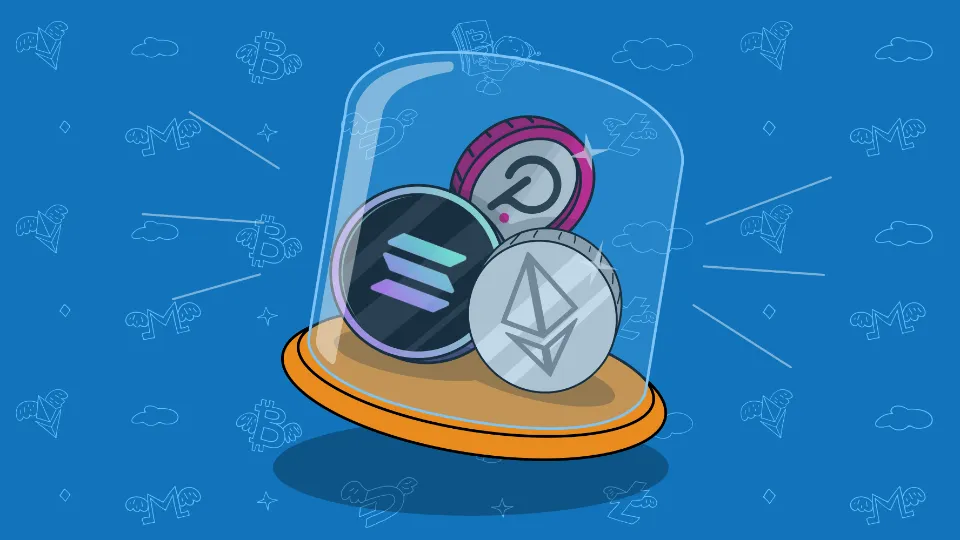
It is useful to have a fundamental understanding of what blockchain networks do in order to understand staking crypto. Listed below are some important details.
Blockchains are “decentralized,” meaning there’s no middleman — such as a bank — to validate new activity and make sure it comports with a historic record maintained by computers across the network. Instead, users collate “blocks” of recent transactions and submit them for inclusion into an immutable historic record. A transaction fee in cryptocurrency is paid to users whose blocks are accepted.
Staking crypto is a method of avoiding fraud and mistakes in this procedure. Users who put some of their own cryptocurrency on the line when proposing a new block or voting to accept one do so in a way that encourages compliance with the rules.
An individual’s chances of receiving transaction fee rewards are typically better the higher the stakes. However, a user may lose some of their stake if their proposed block is found to contain false information, a process known as “slashing.”
What Cryptocurrencies Allow Staking?
The technology underlying some cryptocurrencies, such as bitcoin, heavily relies on crypto staking. It’s crucial to remember though that not all cryptocurrency networks employ staking crypto.
Staking crypto is most likely supported by proof-of-stake cryptocurrencies. Here are a few examples:
- Ethereum (which recently moved away from proof-of-work).
- Cardano
- Solana Staking
- Shiba Inu
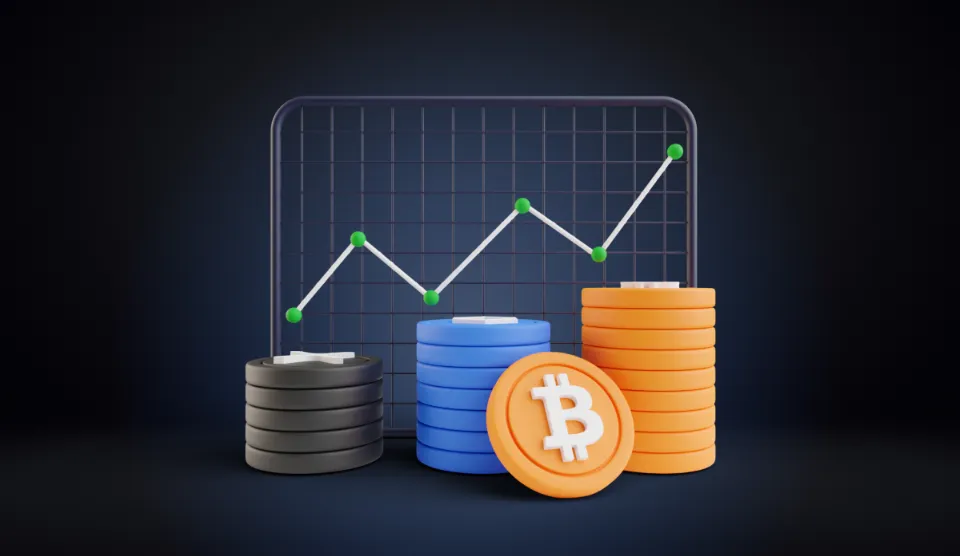
Cryptocurrencies that use proof-of-work rely on mining, which can consume a lot of electricity and requires expensive computers. In general, they oppose staking crypto. Proof-of-work cryptos include:
- Bitcoin.
- Litecoin
How Do You Stake Cryptocurrency?
Depending on your level of technical, financial, and research commitment, there are several ways to begin staking crypto.
Your first decision will be whether to actually validate transactions using your own computer or to “delegate” your cryptocurrency to someone who’s doing that legwork for you.
In networks that support crypto staking, token owners typically have the option to make their tokens available for other users to use in validating transactions, earning a portion of the rewards.
Using An Exchange
Using an online service to stake crypto for you is one option. In exchange for a commission, you can stake on some well-known cryptocurrency exchanges, and you can buy cryptocurrency there using fiat money.
NerdWallet‘s review of cryptocurrency exchanges found that a few of them provide rewards or staking for at least some of the assets they support. With such programs, there are, however, some possible tradeoffs. One reason is that they’ll probably take a portion of your profits, which you could save money on by placing your own bets.
Perhaps more importantly, some products that have offered to stake crypto assets on behalf of customers have run into serious regulatory or financial difficulties:
- In accordance with a deal with the U.S., BlockFi ended its cryptocurrency interest program in early 2022. Financial and Exchange Commission Following a liquidity crisis that lasted several months, it eventually filed for bankruptcy and froze withdrawals.
- Late in 2022, Gemini halted withdrawals from Gemini Earn due to a similar crisis that had just occurred at a company that was running its lending program. According to the business, customer repayment is imminent.
- The SEC, which claimed the program amounted to an unregistered securities offering, forced the cryptocurrency exchange Kraken to stop its staking crypto program in February 2023 as part of an agreement.
Finally, it’s important to keep in mind that third-party crypto staking programs frequently demand that you maintain your cryptocurrency online, on their platforms.
Joining a Pool
If you don’t want to trust an exchange to make your staking decisions for you — or if you can’t find one that supports the token you want to stake crypto — you can join what is known as a “staking pool” operated by another user.
In order to connect your tokens with the validator’s pool, you’ll probably need to be familiar with using a crypto wallet.
Many proof-of-stake blockchains’ official websites have links to information about validators’ workings that can be used to further your understanding of them.
Looking carefully at a potential validator’s background is advised, according to Omkar Bhat, data engineering lead at Boston-based analytics company Flipside Crypto.
Some publicly available information can show you whether a pool operator has ever been fined for errors or wrongdoing, and some details their token delegation protection policies. The amount of fees or commissions is another aspect you can check out.
Bhat advises choosing a reputable pool, although you might not want to select the largest one. There is a case for preventing any one group from gaining an excessive amount of influence because blockchains are meant to be decentralized.
“People often delegate to validators with lower voting power to increase the decentralization of an ecosystem,” Bhat says.
Becoming a Validator
It can be challenging to set up your own staking infrastructure. It needs the appropriate hardware and software for computers as well as the ability to download a blockchain’s entire transaction history. Additionally, the entry barrier may be high.
You would need to start with at least 32 ETH on the Ethereum network, which on Sept. 15, 2022, would be worth about $48,000. Such requirements are not present when staking through a pool or an online service.
Why Do People Stake Crypto?
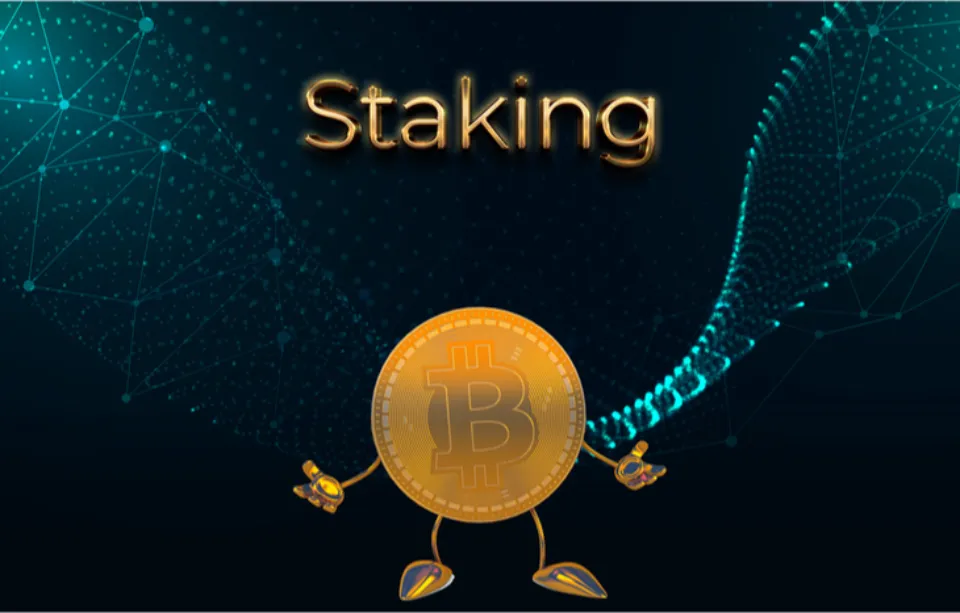
Staking cryptocurrency is done for a variety of reasons. Here are a few of them that we should think about.
Passive Income:
This is most likely the main justification for choosing to stake a cryptocurrency. People can obtain a yield on their cryptocurrency through staking. As previously stated, these returns can be substantial, frequently exceeding those provided by conventional investment vehicles like savings accounts or bonds. (Read More: Yield Farming vs. Staking – DeFi Difference & Similarities)
Eases Access:
Staking is relatively simple to begin. For instance, mining requires a lot of resources and expensive mining rigs. Using third-party platforms, which take care of setting up and running the validation node, a trader can stake cryptocurrency without needing expensive or complicated equipment. To participate in staking, investors essentially don’t need any technical expertise.
Increases Influence:
Staking gives the validator more clout within the network. In comparison to regular users, validators on a PoS blockchain frequently have more sway over the network’s direction and decision-making. Those who want a say in the blockchain’s governance may find this level of influence to be especially alluring. A validator’s influence and voting power on the network are frequently directly proportional to the size of their stake.
Supports the Blockchain:
The opportunity to support favorite cryptocurrency projects is provided by staking. People can contribute to the blockchain’s overall well-being and security. For those who want to support the growth of a particular cryptocurrency and believe in its long-term success, this may be especially appealing. Staking helps to secure the network by requiring validators to have “skin in the game” in the form of their stake, which incentivizes them to act honestly and in the best interests of the network.
Reduces Volatility:
Staking can, to some extent, give people a way to earn returns on their cryptocurrencies without selling them, which can help to lower the portfolio’s overall volatility. You may be able to prevent the effects of price changes on the overall value of your portfolio by earning passive income through staking rather than selling or holding onto investments.
How Safe is Staking Crypto?
There isn’t a simple answer, as there are many different variables and factors to take into account, as with most trading-related questions. In general, staking cryptocurrencies, especially Ethereum, is a reliable source of passive income.
However, it’s crucial to take into account the blockchain’s general security when staking your cryptocurrency. In the case of DPoS, you should also think about the validity of the validator to whom you are assigning your stake. A centralized exchange like Binance, where you hold your cryptocurrencies, runs the risk of being hacked and your money being taken. To reduce this risk, consider holding your cryptocurrency offline in a “cold” wallet such as those offered by Ledger or Trezor instead of on the exchange.
Staking cryptocurrencies can, overall, be a relatively secure and practical way to generate passive income, provided that the necessary precautions are taken and that the validators and blockchains selected are reputable. After stating the aforementioned, let’s examine some of the risks (since nothing is risk-free).
What Are the Risks of Staking Crypto?
When considering potential options for generating additional income from your crypto holdings, it is crucial to be aware of the risks because the crypto space is rife with dishonest individuals.
The Vesting Period:
When staking crypto, you may be required to lock up or “vest” your cryptocurrency for a certain period. As a result, even if you require access to your funds immediately, you won’t be able to transfer or withdraw your cryptocurrency during this time. (If the asset’s price changes significantly, you might also want to withdraw your wager to prevent losses.) Investors won’t be able to trade their tokens during the vesting period, so they won’t be able to profit from any favorable price changes if there are any.
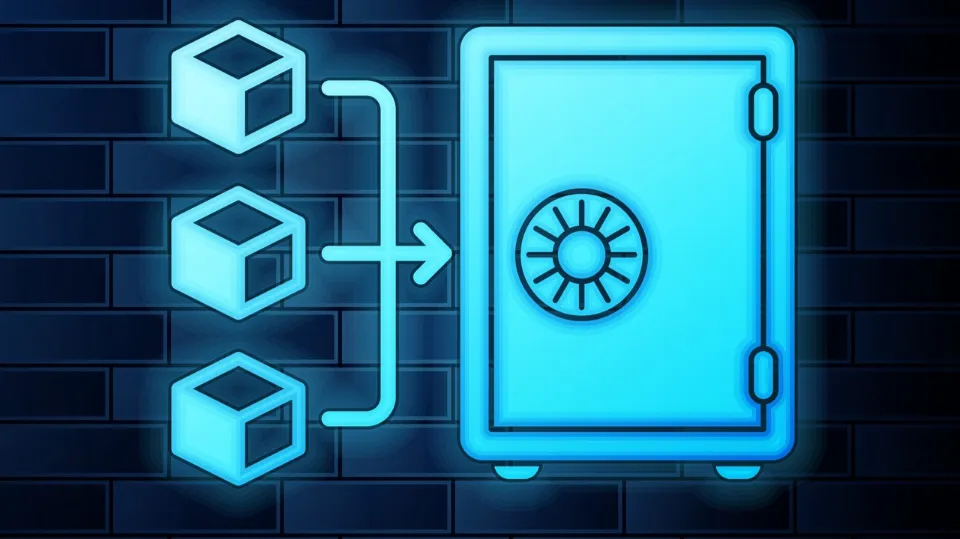
Market Fluctuations:
Over short(er) time frames, cryptocurrencies experience significant market volatility, which may have an effect on the returns from staking. As was already mentioned, any rewards gained from staking may be offset if the value of the cryptocurrency you are using to stake significantly drops. In a situation like the current bear market in cryptocurrencies, the aforementioned period may be seen as a disadvantage.
Liquidity Risk:
The asset’s liquidity is a risk that should be considered when staking. It may be difficult to sell or exchange the asset you are staking for other cryptocurrencies like Bitcoin or stablecoins if it is illiquid. Staking tokens with higher trading volumes and listings on well-known exchanges is a useful way to reduce this risk.
Reward Duration:
Unlike many staking assets, which offer consistent payouts, some assets have a different reward distribution schedule where rewards are given out less frequently, such as once every few days instead of daily. This kind of arrangement obviously limits the possibility of reinvested rewards for higher yields by making it difficult for stakers to receive their rewards in a timely manner. As an alternative, investors can choose staking assets that offer more frequent payouts, such as daily rewards, making sure that their staking rewards are always working for them and aren’t just sitting in a crypto limbo.
Slashing Risks:
To ensure proper validation and maintain the integrity of the blockchain network, validators who violate the rules of the blockchain face a penalty known as “slashing.” Slashing, in the eyes of the person running the staking pool, is the removed portion of the stake. Double-signing and being absent to validate new blocks during downtime are two frequent offenses that can result in slashing. Although the risk is typically low, it’s crucial to understand the rules of the blockchain you are using and the potential repercussions of breaking them. Additionally, pick validators that have a proven track record and a solid reputation.
Validator Costs:
There is no denying that the PoS consensus mechanism uses fewer resources than mining. A validator node’s operation can be expensive, though. For newer investors who might not have the resources to invest in expensive equipment, it is particularly important to take into account the costs of hardware and electricity when it comes to running a node. These costs can become quite high. Staking through outside investors also entails costs, typically in the form of a small percentage of the rewards for staking. Keep an eye on these expenses because, if not controlled, they could quickly deplete your staking returns.
Hacks:
There is always a chance that the staking pool you use will be compromised, which could cost you your stake or lower the value of your cryptocurrency. There is very little chance that investors will be compensated if there is no insurance protection. In the same way, holding cryptocurrency on an exchange is acceptable. Self-custody is crucial because exchanges are frequently hacked and funds are stolen. Not your keys, not your crypto, they say.
Is Staking on Binance Safe?
The largest and most reliable centralized cryptocurrency exchange in the world, Binance, offers users the opportunity to engage in staking through a service it calls “locked staking” that generates passive income through its Binance referral program.
Taking on slashing risks, which guarantees users will receive the same number of tokens they staked in the event of an incident, is one more risk protection option that Binance provides users. While the platform can’t exactly eliminate all of the risks associated with staking, Binance has been able to significantly lower them.
Users can benefit from a wide range of opportunities by staking on Binance such as Solana. The first step is for users to evaluate the options on the platform and select the one that best suits their needs and level of risk tolerance. While some staking options have lower APYs but are thought to be lower-risk investments, others have higher APYs but carry a higher level of risk. (Read More: APR vs. APY – Differences & Which One Should I Use)
While locked savings options offer higher returns following the term’s expiration, flexible saving options pay out rewards daily but at a lower rate of return. Which staking option is ultimately chosen will depend on the person’s objectives and risk tolerance.
Final Thoughts on Staking Crypto
Staking is still a reasonably safe and efficient way to generate passive income, despite the risks involved.
Staking might be a wise choice if you’re looking for alternatives to HOLDing. Even in the most difficult market conditions, you can add returns to your portfolio by diversifying your investments and only risking money that you can afford to lose. This will help to spread out the risk.
FAQs
Is It Worth Staking Crypto?
2023 will be a good year to stake coins. Although the idea of staking is not unfamiliar to regular cryptocurrency investors, the financial market is volatile; always conduct careful research before making any investment decisions. The more coins you bet, the greater the rewards you’ll receive.
Can Staking Crypto Be Hacked?
People who stake cryptocurrency need to be aware of the risks that could cause their money to be lost, frozen, or stolen, or that the value of the staked token could unexpectedly drop to almost zero.
What is the Safest Way to Stake Crypto?
If you’re a beginner looking to buy and sell digital assets in a safe environment, Coinbase is possibly the best crypto staking platform to take into consideration. This is because Coinbase also provides a secure and user-friendly exchange platform in addition to staking services.
Can Crypto Be Stolen When Staking?
There is a possibility that your coins could be taken by hackers if you stake them on an unreliable platform or keep them in an unreliable wallet.

